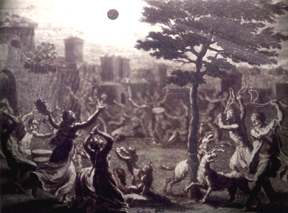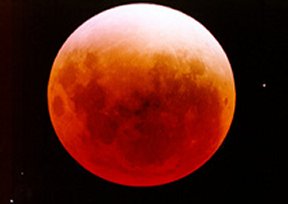This is a diagram of a typical solar eclipse. During a total solar eclipse, the umbra reaches the Earth. During an annular eclipse, it does not. An eclipse occurs when the Moon passes in the path of the Sun and Earth.
Click on image for full size
Windows to the Universe original image
Solar Eclipses
An eclipse of the Sun occurs when the Earth passes through the moon's shadow. A total eclipse of the Sun takes place when the Moon is directly between the Sun and the Earth. When a total eclipse does occur,
the Moon's shadow covers only a small portion of the Earth.
In ancient times, people were frightened by solar eclipses. Now eclipses are of great interest to the public and to solar astronomers. If you ever get to view a solar eclipse, make sure to never look at the Sun directly! Always use one of these safe viewing devices.
You might also be interested in:

Solar eclipses are really great to watch! But in the past, people were very scared of them. They didn't understand what was going on. Some people thought that a monster or animal was eating the Sun! They
...more
There's a lunar eclipse this week! Thursday night, all of North America will see the eclipse. It starts at 10:00 pm Eastern Time. A lunar eclipse is different than a solar eclipse. During a lunar eclipse,
...more
On Thursday, June 21, 2001, there will be a total eclipse of the Sun. Only people living in Africa and Madagascar will see the real eclipse. If you don't live in Africa, you can watch the eclipse on NASA
...more
The last solar eclipse of this millennium was on August 11, 1999. Only people in Europe, the Middle East and India could see it. This was a total solar eclipse, which means that the Moon completely blocked
...more
Do you live in the Caribbean islands? How about in South America? Or the southeastern U.S.? If you live in these places, you are very lucky! You will be able to see a solar eclipse on February 26th!NASA
...more
Rising above the Sun's chromosphere , the temperature jumps sharply from a few tens of thousands of kelvins to as much as a few million kelvins in the Sun's outer atmosphere, the solar corona. Understanding
...more
The gas in the solar corona is at very high temperatures (typically 1-2 million kelvins in most regions) so it is almost completely in a plasma state (made up of charged particles, mostly protons and electrons).
...more















